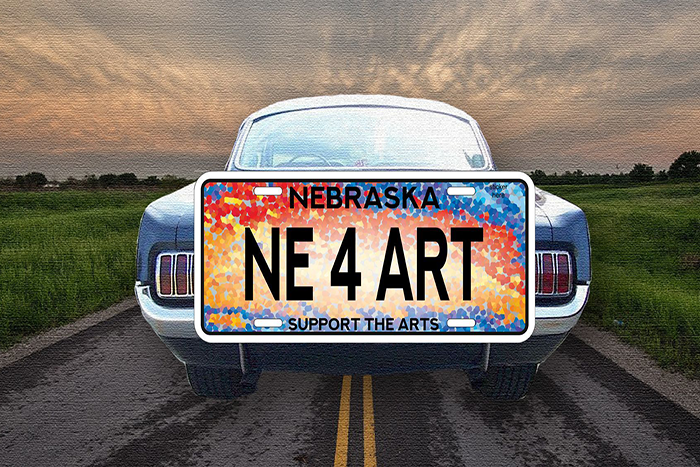As has happened with almost every aspect of life in the past year, the COVID-19 pandemic has changed the way we experience art.
With many galleries and performance spaces closed or limited in-person presence, arts organizations and artists across the Midwest are increasingly turning to technology to display their work safely and maintain relationships with audiences. This comes at the same time as a general economic upheaval in the arts industry.
“Organizations that have maintained their connections with their public – and with their donors – will likely come out of (the pandemic) more sustainable… It doesn't matter if it's a large organization, a medium-sized one or a small one,” said Suzanne Wise, its executive director Nebraska Arts Council, which provides grants and services to artists and arts organizations throughout the state. Recently, the agency helped launch Nebraska's new Support the Arts license plate selection.
As the scale of the pandemic began to become known in the United States last spring, Omaha's Peter Kiewit Foundation surveyed more than 30 local arts and culture organizations to estimate the economic impact of the virus. By July 2020, the report said, surveyed organizations had canceled more than 2,700 events, resulting in a loss of approximately 858,500 user visits. That translated to more than $6.9 million in lost import revenue, according to the report, with another $5.7 million in reported losses in non-admission income.
That number has almost certainly increased in the intervening months. In December, Omaha's American Midwest Ballet told NPR that it had missed its annual live production The Nutcracker I will results in a loss of half a million dollars on a budget of just under $2 million.
The popular music scene—locally and nationally—has also suffered.
“I think it's safe to say that 2020, as a result of the pandemic, has made the live music landscape an apocalyptic wasteland,” said Matt Maginn, bassist for the Omaha rock band Cursive. “All tours and most live events have been cancelled. This left venues with up to 100% reduction in revenue and no relief from overheads. The musicians were left without any income from live performances.”
The picture was no less bleak across the river in Iowa, said Megan Helmers, director of marketing and public relations for the Des Moines Symphony. In the spring and summer, as the new coronavirus began to spread with alarming frequency, the symphony was forced to cancel its concerts, including the Yankee Doodle Pops Fourth of July celebration, one of the symphony's biggest fundraising events.
In order to stay connected with its audience, the symphony began hosting a series of virtual events that listeners could tune into online, Helmers said. Since April, symphony musicians have been broadcasting small weekly concerts live from their homes, and symphony experts have hosted videos that dive into the careers of various composers.
The Des Moines Symphony has also hosted a number of larger concerts and virtual events, including recent ones New Year fundraiser, since the pandemic began. In doing so, he partnered with local media company JABbermouth Media and Iowa Public radio to produce audio and visuals.
“We had never done anything like this before. We were a pretty proportional organization,” Helmers said. Now, “we do the same number of live streams as we would normally do concerts. We have added other online videos that are free to access. So if someone misses the deal, it's much easier to stay in touch now because of the additional programs online.”
American Midwest Ballet has also entered the world of digital programming. The ballet was released this holiday season The Nutcracker Home Cinema Editionmaking the show free until the end of 2020.
Visual arts venues, too, had to adapt in the face of the pandemic. The University of Nebraska at Omaha Art Gallery has limited the number of people who can visit to 10 at a time, said Jeremy Menard, curator and visual resources manager for the gallery. The gallery has installed a camera with a bell and an electric lock to control the flow of visitors and requires masks and social distancing once inside.
“The events we normally did we couldn't do because of the capacity limits during the pandemic. We host a lot of events throughout the year — last year we had 90 events at the art gallery and we weren't able to host them this year,” Menard said.
Even so, the gallery was able to host some larger events virtually, including live talks with graduate art students and guest speakers. Sculptor and engraver Terry James Conrad and photographer Nadia Huggins both participated in conversations via Zoom. The gallery also hosted a virtual retrospective for retired UNO art professor Bonnie O'Connell.
As vaccination efforts continue, many, including Menard, are cautiously optimistic that next year could see a return to more in-person programming. Meanwhile, some relief efforts have paid off — the National Independent Venue Association recently successfully lobbied to include aid for music venues in the latest COVID-19 relief package.
“A portion of the venues, the promoters, the inmate talent will hopefully start a path to recovery,” Maginn said. “I would predict that both live and venues will be more selective than in the past for the foreseeable future. People will be reluctant to be in crowds and all live parties will behave more efficiently due to the challenges and losses of 2020. I believe that a new and improved live (or recorded) performance streaming element will gain a greater foothold in regular tours and circles promotion for most bands”.
—
Blake Ursch is a freelance writer and former newspaper reporter living in Omaha. His work has appeared in the Omaha World-Herald, Kansas City Star, Lubbock Avalanche-Journal and other publications around the Midwest.

